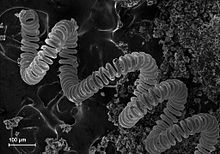Introduction and Working Principle of Incandescent Light Bulbs
– Incandescent light bulbs have a wire filament that is heated until it glows.
– The filament is enclosed in a glass bulb that is either evacuated or filled with inert gas.
– Current is supplied to the filament by terminals or wires embedded in the glass.
– Incandescent bulbs are manufactured in a wide range of sizes, light output, and voltage ratings.
– They work equally well on alternating current or direct current.
Efficiency and Energy Consumption
– Incandescent bulbs are much less efficient than other types of electric lighting.
– Less than 5% of the energy they consume is converted into visible light.
– The luminous efficacy of a typical incandescent bulb for 120V operation is 16 lumens per watt.
– Compact fluorescent bulbs have a luminous efficacy of 60lm/W.
– Typical white LED lamps have a luminous efficacy of 100lm/W.
Applications and Uses of Incandescent Bulbs
– Incandescent bulbs are used in household and commercial lighting.
– They are also used for portable lighting such as table lamps, car headlamps, and flashlights.
– Incandescent bulbs are commonly used for decorative and advertising lighting.
– Heat lamps in incubators, lava lamps, and Easy-Bake Ovens use the heat produced by filaments.
– Quartz envelope halogen infrared heaters are used for industrial processes and space heating.
Lifespan, Replacement Options, and Government Initiatives
– Incandescent bulbs typically have short lifetimes compared to other types of lighting.
– Home light bulbs last around 1,000 hours, while compact fluorescents last around 10,000 hours.
– Lighting LEDs can last 20,000-30,000 hours.
– Fluorescent lamps, high-intensity discharge lamps, and LED lamps can replace incandescent bulbs.
– Some governments have initiated a phase-out of incandescent light bulbs to reduce energy consumption.
History, Inventors, and Advances in Incandescent Bulb Technology
– Prior to Joseph Swan and Thomas Edison, there were other inventors of incandescent lamps.
– Edison’s version outstripped others due to an effective incandescent material, higher vacuum, and high resistance.
– Edison’s success was attributed to his development of an entire integrated system of electric lighting.
– Many experimenters worked with various combinations of materials and enclosures in the 19th century.
– Inventors such as Marcellin Jobard, Warren De la Rue, and John W. Starr made contributions to incandescent bulb development.
– Joseph Swan and Thomas Edison played significant roles in the commercialization of incandescent bulbs.
– Patent disputes and advancements in filament materials and gas filling techniques occurred over time.
– Efforts to improve efficacy and measures to ban the use of incandescent bulbs have been implemented.
– Construction details of incandescent bulbs, including the use of tungsten filaments and the emission of heat, are important aspects of their design. Source: https://en.wikipedia.org/wiki/Electrical_filament
An incandescent light bulb, incandescent lamp or incandescent light globe is an electric light with a wire filament that is heated until it glows. The filament is enclosed in a glass bulb that is either evacuated or filled with inert gas to protect the filament from oxidation. Current is supplied to the filament by terminals or wires embedded in the glass. A bulb socket provides mechanical support and electrical connections.



Incandescent bulbs are manufactured in a wide range of sizes, light output, and voltage ratings, from 1.5 volts to about 300 volts. They require no external regulating equipment, have low manufacturing costs, and work equally well on either alternating current or direct current. As a result, the incandescent bulb became widely used in household and commercial lighting, for portable lighting such as table lamps, car headlamps, and flashlights, and for decorative and advertising lighting.
Incandescent bulbs are much less efficient than other types of electric lighting. Less than 5% of the energy they consume is converted into visible light; the rest is lost as heat. The luminous efficacy of a typical incandescent bulb for 120 V operation is 16 lumens per watt (lm/W), compared with 60 lm/W for a compact fluorescent bulb or 100 lm/W for typical white LED lamps.
The heat produced by filaments is used in some applications, such as heat lamps in incubators, lava lamps, and the Easy-Bake Oven toy. Quartz envelope halogen infrared heaters are used for industrial processes such as paint curing and space heating.
Incandescent bulbs typically have short lifetimes compared with other types of lighting; around 1,000 hours for home light bulbs versus typically 10,000 hours for compact fluorescents and 20,000–30,000 hours for lighting LEDs. Most incandescent bulbs can be replaced by fluorescent lamps, high-intensity discharge lamps, and light-emitting diode lamps (LED). Some governments have begun a phase-out of incandescent light bulbs to reduce energy consumption.
